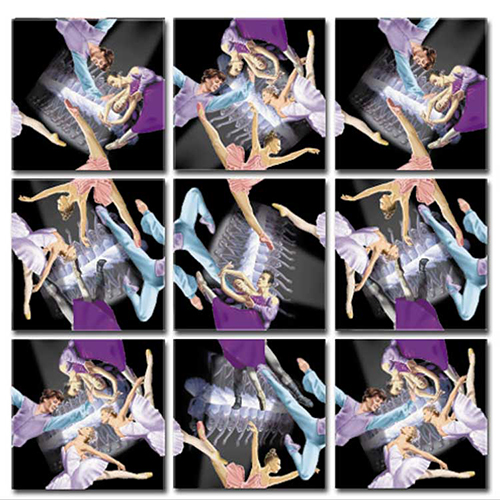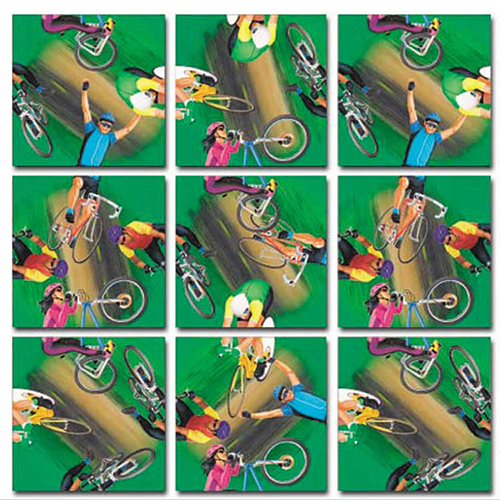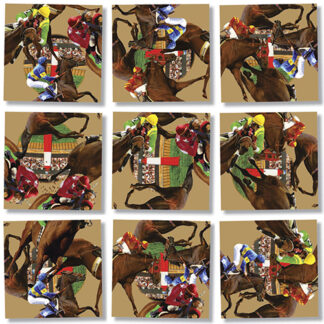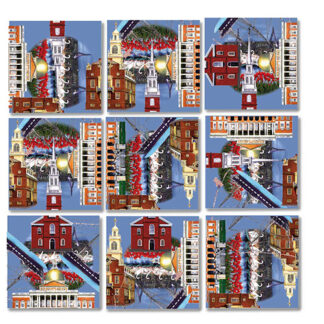Ballet Scramble Squares®
$15.00
180 in stock
Description
The third performing arts style of Scramble Squares®, Ballet joins Symphony and Cirque du Soleil® as a gift for the cultured puzzle connoisseur.
Fascinating Facts
Ballet is an elegant, graceful and athletic dance art form that began in Europe in the 14th and 15th Centuries, when royal courts were entertained by performances called “masques.” These early productions featuring masked and costumed courtiers developed into lavish spectacles from which emerged specific dance positions and steps– the very same steps and the same basic positions that are practiced in ballet classes throughout the world every day in the 21st Century and are studied today not only as a means of artistic expression, but also to improve posture, coordination bearing, balance and physical fitness.
In the 16th Century, when Italian princess Catherine de Medici married King Henri II of France, she introduced ballet de cour, or “court ballet” to the Court of France. France’s King Louis XIV loved starring in his own court dance productions and became one of ballet’s greatest patrons. He founded the Académie Royale de Danse, which would later become the Paris Opera Ballet. The role of the ballerina did not come into existence until the 18th Century. The restrictive clothing that women wore prevented them from performing the demanding positions and steps of ballet. Men wore tights, which gave them freedom of movement for leaps and spins. Women had to wear heavy wigs, heavy full skirts, high heeled shoes and tight corsets that restricted their movement and their breathing. As ballet dancing moved onto the theater stage, women also had to overcome society’s taboo against female performers. When, in the early 1700s, dancers began to leap and twirl, rather than just move elegantly from graceful pose to graceful pose, women began to rebel against their restrictive costumes. Marie Ann Cupis de Camargo created quite a scandal when she took the heels from her shoes and shortened her skirts so that she could perform some of the flamboyant steps that were then being performed only by men.
One of the most recognizable and elegant techniques of ballet is “toe dancing,” formally called dancing “on pointe,” which completely revolutionized ballet. What had been merely an acrobatic dance step became a new means of artistic expression. The artists and poets of this Romantic era were concerned with beauty, passion, nature, the supernatural and, especially, with the power of love. The great Romantic ballets of the time are almost always passionate, but tragic encounters between a mortal man and a supernatural female. The ballerina’s characters are usually inhabitants of the supernatural world, such as the sylph in La Sylphide, the wilis in Giselle, the water nymph in Ondine, the fairy in La Peri, and in later 19th Century ballets, the swan maidens in Swan Lake, the fairies in The Sleeping Beauty and the Shades in La Bayadére. These supernatural women symbolize beauty, nature, love, the supernatural and immortality. Wearing her simple and delicate tutu, the ballerina is the very symbol of feminine purity and virtue. When she rises on pointe, the ballerina achieves a heavenly lightness and an angelic grace. Pointe dancing is not just another athletic dance technique, it enhances the drama by elevating the very character of the female dancer.






Reviews
There are no reviews yet.